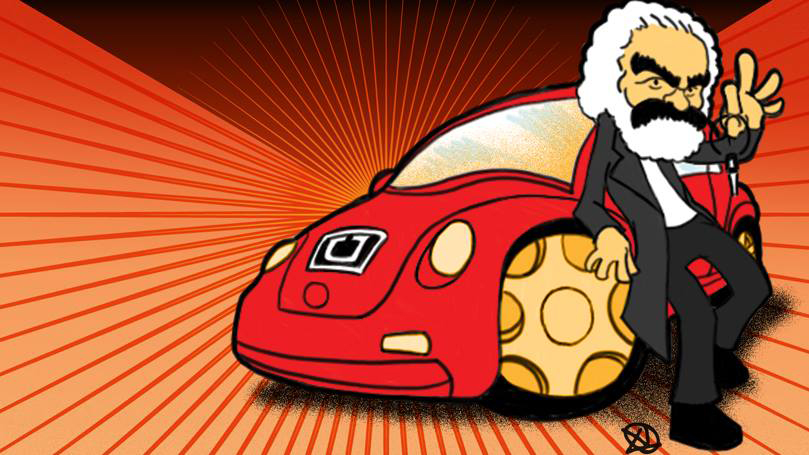
The working class of the 21st century includes rideshare drivers, nursing home aides, baristas, warehouse workers, UPS package handlers, teachers, engineers, research scientists, and I.T. folks – alongside factory, construction and farmworkers and incarcerated labor.
This class – which makes up 90 percent of our country’s population – is the powerful force that can create a society that puts people before profits.
We are NOT stuck with capitalism forever
Human society has developed through many stages – capitalism is only one of them.
It is natural for people to believe that the society they were born into is the only imaginable state of affairs and that it will continue forever. However, the fact is, capitalism is only a stage of human development – it is not an eternal system.

Karl Marx and Frederick Engels made this point in explaining what capitalism is really about when they wrote The Communist Manifesto.
Today, people of every generation – especially the millennials – want to know if it’s possible to change a system that causes misery, inequality, wars and the devastation of our planet. People want all of humanity to share in the benefits the human race has achieved. Can we create a system that puts people before profits? Let’s look back to the origins of capitalism. In the mid-1800s, giant factories and mass production, powered by steam and later electricity, were just coming into being.
Certainly, most people at that time worked, but most of those working people were not yet members of what Marx defined as the working class. The majority of people at that time lived in rural areas and spent their work lives producing for the needs of their own individual family. From what they produced, they paid taxes and rent to the owners of the land.
In England, the land the peasants had farmed more or less in common was fenced in and converted by its owners to sheep grazing. Herds of animals brought in immensely more profits to the owners of the land than could be generated by the farming of individual peasants. Meanwhile, new factories using new technologies arose in the cities, making textiles and machinery. The former peasants had to quickly migrate to the cities. They had no way to support their families except to sell their labor working in the new sweatshops.
Why we’re anxious and insecure: workers can only live by selling our labor power
Capitalism by its very nature creates extreme insecurity and misery.
Today’s workers, even highly paid ones, can still be insecure, only one paycheck, one plant closing, one economic downturn away from losing their health care, their home, their retirement.
With capitalism, it’s all about commodities!

In a developed capitalist society such as the one we live in, we spend our workdays producing commodities – that is, products made to sell in capitalism’s marketplace. Then we have to buy other commodities – the goods and services we need to live. The capitalists sell the goods and services the workers produce, but they pay the workers only a small portion of the proceeds.
We make it, they take it! Does that make sense?
Workers are the force that activates the machinery and software. When we apply our physical and mental efforts to the production process, we produce far more value – what Marx called surplus value – than we are compensated for. The rest of the money goes to those who own and control the machinery and technology, that is, to the capitalist class. Marx showed that this surplus value is the source of the capitalists’ profits.
Because workers produce everything as a group, wouldn’t it make sense for the machinery and technology to be owned by workers as a group? But instead, in a capitalist economy, it’s individual capitalists who hold the title to both the machinery and the technology. So, it’s the capitalists, not the workers, who end up owning the goods and services that we workers produce.
What exactly does ‘exploitation’ mean?
We’re in a situation where one small class of people – the capitalists – owns and controls the means of production – the machinery, land, and technology – while another group (what some call “the 99%”) – the working class – actually does the work. This contradiction is the root of what Marx and Engels called exploitation.

Exploitation describes the amount of value that workers produce over and above what they are paid. Exploitation is the source of the profits the capitalists rake in. Because modern technology makes it possible for today’s workers to produce so much more value than they get paid, trillions of dollars across the globe flow into the bank vaults of the super-wealthy.
Exploitation is what accounts for the enormous accumulation of wealth, and what today everyone refers to as income inequality.
Capitalism is also about control
The struggle under capitalism is about profits, but it’s also about claiming control. Who will be hired and fired, whether polluting technologies will be used, whether factories will be shut down – these questions are decided in corporate board rooms, possibly continents away from where the work takes place. Meanwhile, the people who actually do the work or who live in the surrounding communities, have no say. But we are the ones who live with the consequences. Control over working conditions and general quality of life – health and environmental issues – are working-class issues.
Technology drives changes in the working class
The commodities workers produce today are not just physical products, like food or clothing or cars. In fact, the commodities most of us produce in our workday are what are referred to as services.

These new commodities include health services, child care, education, food service, and more. Sometimes there isn’t such a fine line between products and services. For example, food “service” workers operate fryers and grills to produce a product. Health care workers use MRIs to generate sophisticated medical reports. Either way, these “service” workers produce actual commodities that are sold in capitalism’s global marketplace.
Many workers in the “service” sector produce “public goods” that are consumed by society as a whole rather than individually. This includes everything from the internet, the electric grid, the education system, sewage treatment, bridges, and public transportation to museums and sports facilities.
These public goods are a much larger part of the economy than they were in earlier times. Some public goods, such as cell phone or cable TV service are privately owned and directly produce a profit. Others, such as education, veterans’ health care, and water supplies, increasingly are the targets of corporate privatization schemes.
“Workers of the world unite!” Why unity is the toughest challenge
Since workers first started organizing, we have learned that achieving unity is the most difficult challenge facing the working class. Why?
Workers under capitalism have interests in common, but we are also set against each other. We compete for jobs in a dog-eat-dog marketplace.
As competitors against each other, where there are always more workers than jobs, we individual workers have no bargaining power. It’s easy for employers to play us off against each other. That’s why wages are so low in the U.S. today.
The wages paid by even hugely profitable corporations in the U.S., the richest country in the world, are so low that over 40 percent of our nation’s children live in families without sufficient income to cover basic needs. In the vast majority of these families, the parents are working, often for giant multinational corporations whose profits enrich the world’s billionaire class.
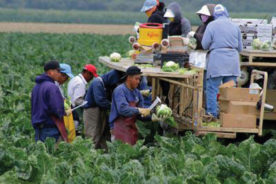
Competition in the workplace is the enemy of the working class. So, from the dawn of capitalism, on every continent, workers spontaneously organized one form of union or another to reduce competition between individuals in a workplace. There’s only ever been one solution: unity! That was the only way to get more pay. It’s the only way to get a say-so on what goes on in the workplace. With unity and organization, workers can cooperate to strike or slow down or exercise political power. We can move toward leveling out the playing field against employers. We can get respect on the job and a voice at work.
Today, when workers in one country or even in one state, try to deal separately with global corporations, we all know what happens: We end up in “the race to the bottom.” It’s a race we all lose; the “winners” of that race are those who will accept the lowest pay in order to be chosen as the ones to get the job.
Profit-hungry corporations pit worker against worker, state against state, union against non-union, country against country and as we know so well here in the United States, white against black, native-born against immigrant.
What have we learned? The ideology of racial superiority is built into capitalism
Capital, wrote Marx, comes into the world dripping from head to foot, from every pore, with blood and dirt. At the same time that capitalism was bringing into being the working class – a group of people who had nothing to sell but their labor – it simultaneously brought into being another category of people who could not even sell their labor, but whose very bodies were themselves sold.
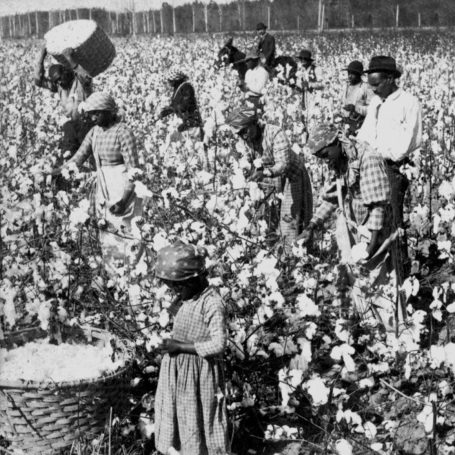
The pretext the early capitalists promoted to justify the kidnapping and enslavement of millions of women, men and children was the purported inferiority of humans with darker skin. That same ideology of white supremacy was maintained and refined by future generations of capitalists. It turned out to be a powerful weapon against the newly emerging working class. Racism provided the template to divide that working class against itself, to shatter its most important asset – unity.
Racism is not a quirk or an aberration of the “free market system.” It is built right into it. Racism was woven into the development of capitalism at every stage from 1492 to today. Racism not only justified the extreme theft of labor that was slavery. The doctrine of racial superiority was also built in to the theft of two entire continents of land from their inhabitants. It was at the core of the genocide of millions of those Native Americans to “clear” that land.
These massive robberies and massacres, along with the brutal exploitation of early industrial workers, paid for the huge investment in machinery and technology that has made today’s super-productivity possible and that has made the United States the richest country in the world.
The elaborate systems of unequal treatment of African Americans that followed the slave system – “Jim Crow” – were the blueprints for an infrastructure to stigmatize, de-humanize and super-exploit particular groups.
These blueprints for inequality and discrimination within the working class have been refined and used against other people of color – Latino, Asian, Muslims, Native Americans, immigrants – as well as against women. Such divisions provide the means for attacking the unity of the whole working class.
Discriminatory hiring and promotion practices, unequal treatment in school funding, policing practices, red-lining housing policies, and mass incarceration are examples of policies embedded in capitalist society that continue the infrastructure of institutional racism.
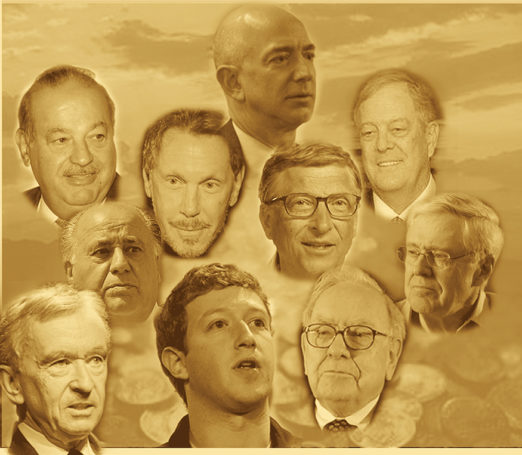
In the capitalist economy of the United States, women overall are paid 20 percent less than men although our work is equally valuable. This super-exploitation generates enormous extra profits while impoverishing millions of working class families. With no child care assistance provided, women and families carry the full burden of raising the next generation of workers.
Working-class productivity should work FOR us
In the U.S., it takes less than 2 percent of our workforce to produce all the food we eat. Just 8 or 9 per cent of our workforce produces all of our manufactured goods. Only 7.5 percent are involved in construction. Transportation and warehouses take up another 7 percent. Energy workers are less than 1 percent. Workers fulfilling the other functions that may be necessary for material production amount to 10 percent. The remainder – far more than half of the workforce – is engaged in producing values that didn’t even exist a hundred years ago. Dramatic examples are education and health care. Education workers make up nearly 10 percent of the work force while health workers constitute 9 percent.
Using science and ingenuity, humanity has developed an enormous leap in the level of productivity.
With everyone working just a few days a week, the material needs of all of the human race could be met. The rest of humanity’s time could be spent delving into science and medical research, finding ways to make the earth a better place to live for all its creatures. Humans could pursue art, music, sports, quilting, heavy metal concerts, gourmet cooking, tattoo design, gardening, biking, or just hanging out.
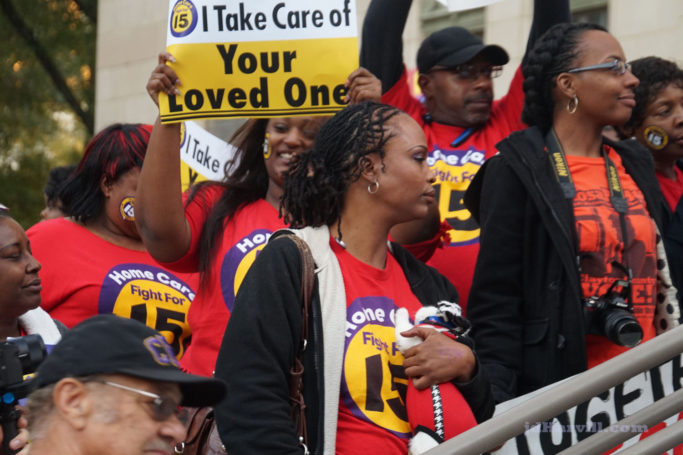
Tragically, since capitalism is a system based on the drive for profits, not the needs of people, the result of productivity is not a higher quality of life. Instead, the result of increased human productivity is massive insecurity: unemployment, falling wages, debt, people hustling two or three jobs to make a living, and mass incarceration and immigrant detention centers within an exploding network of profitable prisons. Meanwhile, the planet is in mortal danger due to capitalism’s aggressive marketing and production of mountains of useless goods and a never-ending series of wars.
As much as life has changed since the rise of capitalism, the dynamics of that economic system are still the same.
Capitalism still puts profits before people
Today workers still pool their efforts across the globe to make the goods and services that humanity uses. At the same time, a smaller and smaller class of capitalists still owns the means of production those workers use in their work.
Capitalism is still a system driven by what’s good for profits, not by what’s good for people.
Capitalist ideology still falsely claims that the profit system – what they call “the free market” – will automatically make life better for all of humanity.
Capitalist ideologues still foment ideologies of racial superiority, division, hatred of immigrants, and misogyny.
The working class still can and must fight back against injustices. Important gains have been fought for, won, lost and fought for again. It’s like pushing a boulder up a hill: The fundamental contradictions inherent in the capitalist system cannot be resolved within that system, and the gravity of capitalism’s drive for profits keeps the boulder rolling back down over us.
Socialism: the logical (and urgent) next stage
Marx and Engels pointed to the need for a revolutionary change in the economic system – from capitalism to socialism.
In a socialist society, the means of production – that is, the technology, software, manufacturing centers, and transportation and communication networks – would be owned and controlled collectively by the same folks who work with them. This would allow humanity’s resources to be used for the good of people, not for increasing profits.
In a socialist society, bigotry and misogyny would still have to be taken on, but they would no longer have corporate and media sponsors which profit from the promotion of these poisonous ideologies.
In a socialist society, profit-driven oil and finance capitalists could no longer endanger our planet. Science, not greed, could guide the nation’s policies.
More and more people agree on these goals. Nearly half of today’s millennials support socialism. But how do we get there?
How can the working class increase its power?
Today’s working class is bigger than ever and potentially more powerful. But we’ve got work to do to start thinking of ourselves as a class and acting together as one – what we call class consciousness.
In the U.S. today less than 11 percent of workers have unions. Workers need the power they get from unions. To realize the working class’s potential power, every worker in America needs a union. More and more, nontraditional workplace organizations, such as Fight for 15, Our Wal-Mart, workers collectives and Workers Centers are critical tools to broaden labor’s outreach to those denied union representation.

Polling places in every neighborhood – and the Congress, State Legislatures, and City Councils they elect – are the battlegrounds for many of today’s working-class struggles – for the right to belong to a union, debt-free education, health care for all, immigrant rights, raising the minimum wage, reproductive rights.
We need to make sure that progressive coalitions put forward working class programs and elect workers as their candidates.
Every member of our working class should have the right to vote! We can’t be a true democracy when tens of millions of folks who every day do the work that keeps our economy going, who pay taxes, and raise their families in our communities, are denied a voice. This list of disenfranchised American workers includes 13 million undocumented workers, 6 million incarcerated and formerly incarcerated people, one third of whom are African American, and uncounted millions who are victims of voter suppression and gerrymandering. The massive suppression of working class votes doesn’t just hurt those who are barred from voting. It keeps anti-worker politicians in power, politicians who vote to cut health care, Social Security and union rights.
Communists strengthen the working-class movement. Through the ups and downs of the class struggle, Communists consistently advocate for socialism – the only lasting alternative to the dangers and inhumanity of capitalism. At the same time, Communists are activists on the ground in day-to-day struggles for better wages, health care, equality and justice, peace and planet preservation. From that vantage point, Communists contribute to the development of class consciousness and a path forward that puts the working class in the lead.
International solidarity
While global capitalists flit around the globe, plotting and scheming, meeting and greeting in Davos and Mar-A- Lago or at the G7 summit, shifting their money from secret Swiss accounts to tax havens in the Cayman Islands – workers and our organizations are restricted and isolated behind the same borders that the capitalists and their money cross with ease. We’re practically forbidden from fraternizing and getting together. We are bombarded by streams of hateful rhetoric about workers in other countries.
Nevertheless, in more and more cases, we work for the same international conglomerates that cheat us on a global scale, hiding their profits in off-shore tax havens and playing us off against each other.
We need to be able to cooperate with our brothers and sisters across the globe to fight for a global minimum wage and global working condition standards.
Why we work with forces beyond the working class
In today’s political arena, the most extreme right-wing and anti-union forces are led and funded by finance capital, by big oil, and by the military and prison industries. The Republican Party has become their political arm. The strategy of the working class must be focused on defeating these fascist-minded forces through building broad alliances with other groupings which also oppose them. Often, the electoral vehicle for those broad alliances is the Democratic Party. The labor movement and other working-class organizations have a crucial role to play here in insuring an independent voice for workers, and putting forward elected representatives who come from the ranks of workers.

We workers as a group face off against capitalists, but we can increase our strength by picking up allies from other groups such as small businesses which are also unfairly burdened by the parasitic billionaire class.
Taking advantage of splits among opposing forces in the political arena can be critical. After all, although we are the majority of the population, many of us don’t see ourselves as workers. Many folks aren’t connected with a union or a social justice organization or a progressive religious community, so they take their lead from politicians or corporate-leaning civic organizations.
In many families, some members work for a boss and others run a small business. Nevertheless, on most issues, their interests align with those of the working class, whether it’s on taxing the rich, rebuilding infrastructure, or saving the environment. If we work together with these “middle” forces and even some sections of the capitalist class on those issues where our interests align for the present, we have a stronger hand. In this way, we can help bring the workers who still follow the lead of the small business forces or even some capitalists into coalitions with forces led by the working class.
An example of this tactic is the push for normalization of relations with the socialist-oriented country of Cuba. Friendly relations with a socialist country open the door to peace and to the chance to see the advantages of a socialist society. Kansas ranchers and Minnesota agribusinesses, for their part, see big bucks in an untapped market in Cuba for their poultry and grain. Workers employed in those sectors also stand to gain. For their own self-interest, these business interests are an ally in this campaign that ultimately serves the interests of the working class.
The struggle for marriage equality is a dramatic example of how working together across class lines was a powerful tactic leading to progress for working class interests. This struggle drew large support from progressive corporate players in many areas. The victory of marriage equality resulted in a more unified working class and the transformation of an issue that had divided the working class into one that has created unity.
Our working class is moving through uncharted territory
There is no quick and easy path to move from capitalism to socialism. There is no map for making this revolutionary change in our economy and political system because, in many ways, we are crossing uncharted territory.
The challenge for the working class in the U.S. is quite different from that of other countries where the working class and its allies have made socialist-oriented coalitions the leading forces in the political arena. Other countries, such as Vietnam, Cuba, China, and the former Soviet Union, have had to tackle the huge economic challenges of underdevelopment before they could begin to meet the needs of their people. The U.S., on the other hand, already has resources to provide for all.
For the U.S. working class and people, the struggle for socialism is mostly a political challenge. And that challenge is enormous. The capitalist class that the U.S. working class is up against has control not only over our economy, but is backed up by a world-wide military machine and has a sophisticated 24-hour-a-day media machine at its disposal. The ruling class continues to wield the devastating weapons of division – racism and misogyny.
On our side is a working class that is now the huge majority of the population, a working class with a proud tradition of militancy. The American people have a strong commitment to democracy.
We have a rich history of movements to fight inequality and racism. We have the international solidarity of our brother and sister workers around the world. We have the 21st century social media tools to share information, ideas and organizing in a way that was never before possible.
The 21st century is an era of heroic movements and great collectives, but less than previous eras, of great individual heroes. It will take the collective efforts of our class – acting together as a class – to figure out the complicated tactics needed to defeat the ultra-right, to overcome voter suppression, to save the environment, and to unite against inequality in all its forms. Working in our favor is a generation open to new ideas.
In the past, few workers had the education needed to study big questions in depth. Today, we have a highly educated working class. In our union meetings, electoral campaigns, communities, churches and school councils, we can share experiences, try out new tactics, study and debate.
Socialism requires not only the collective ownership of the means of production. Socialism also requires the development of democracy at every level of society. We need to develop forms for people to make the decisions and carry them out – from the workplace to the neighborhood to the school to national policy. We need decision-making structures at every level in civil society, structures that must be controlled by the workers.
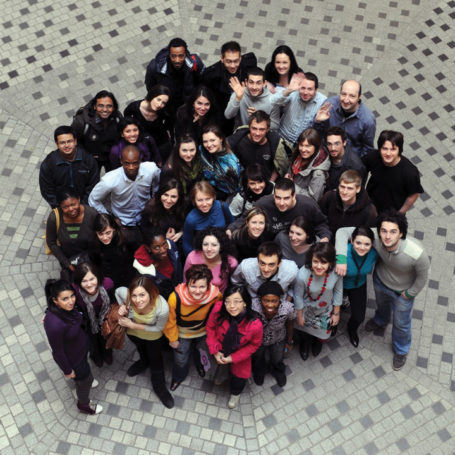
To be successful in developing a socialist economy, the working class needs to figure out how to build democratic processes that are effective.
Members of the working class are not just the receivers of wisdom handed down from on high. We all do the work that makes this society function, and all of us have the ability to create and employ the knowledge we have, the wisdom we bring, to decide our collective future.
Together, we can solve the tough challenges ahead and chart a path to something better than the capitalist system that dominates our lives now. That “something better” is socialism.
We need to change how the working class looks at the millennial generation, including how those young workers see themselves. They don’t always fit the20th-century stereotype of workers, and employers are glad to encourage that misperception.
In fact, employers go to great lengths to call members of today’s working class anything but workers (instead they are labeled everything from “contractors” and Wal-Mart “associates” to “day laborers” and prison factory “offenders”). Nevertheless, WE ARE ALL WORKERS. All those who work for a wage, plus those who are manipulated into some kind of shady contractual arrangement but still contribute to the collective output of humanity, all of us are members of today’s amazing working class!
This class includes everyone from engineers, software developers, doctors, and Major League ball players to daycare workers, electricians, retail and food industry workers, Amazon warehouse workers and more.
Our labor feeds, clothes, houses and takes care of humanity and at the same time generates trillions in profits.
Trillions that belong to us!
About the author: A journeyman instrument mechanic, Roberta Wood is a lifelong rank-and-file union activist. She co-founded the Women’s Caucus in the Chicago-Gary district of the Steelworkers union and is now an active member of the Electrical Workers Union. She serves as secretary-treasurer of the Communist Party USA and a senior editor of People’s World. rwood@cpusa.org


 Join Now
Join Now